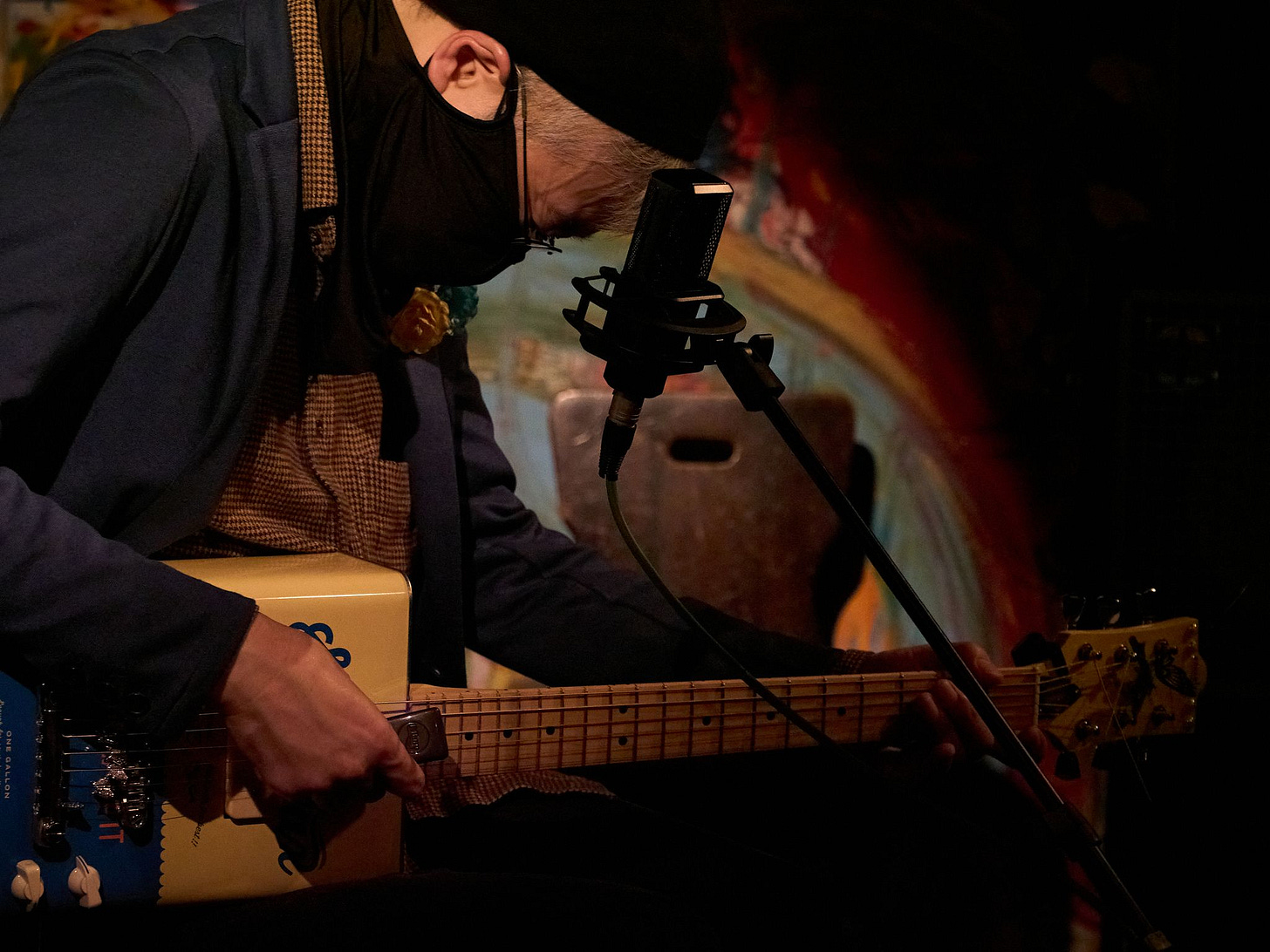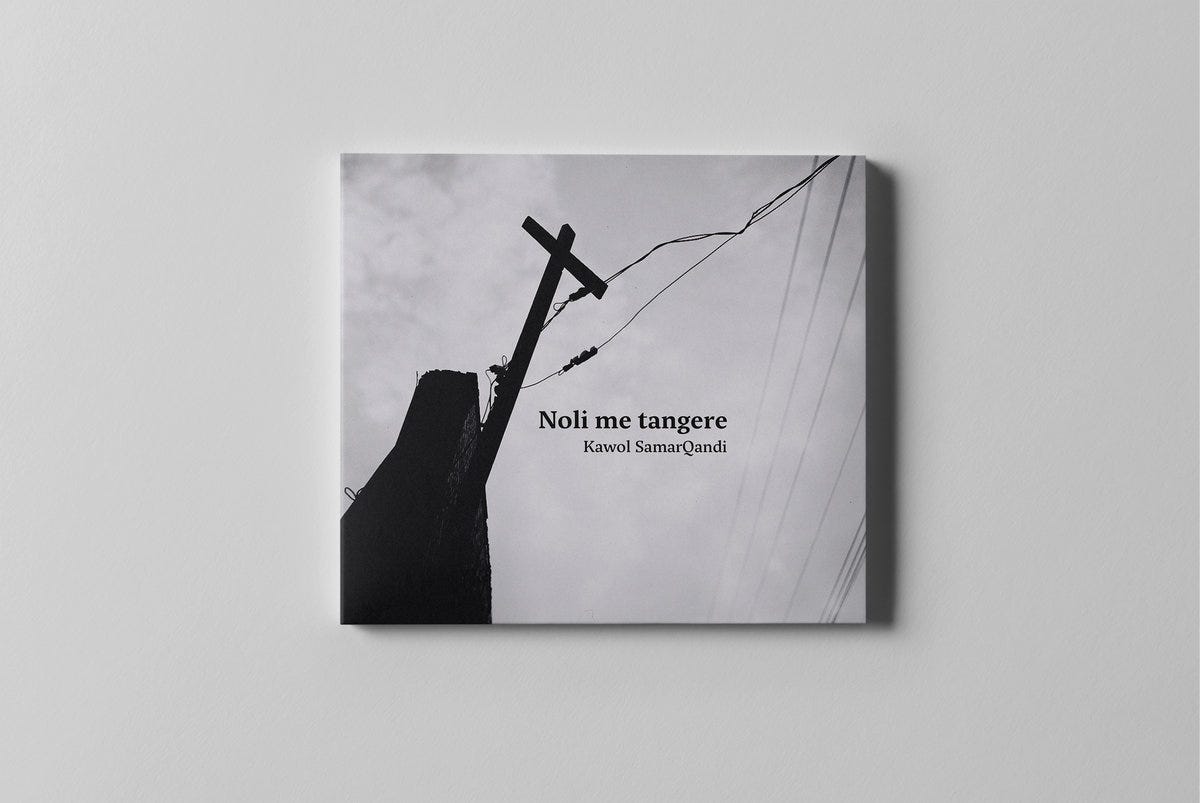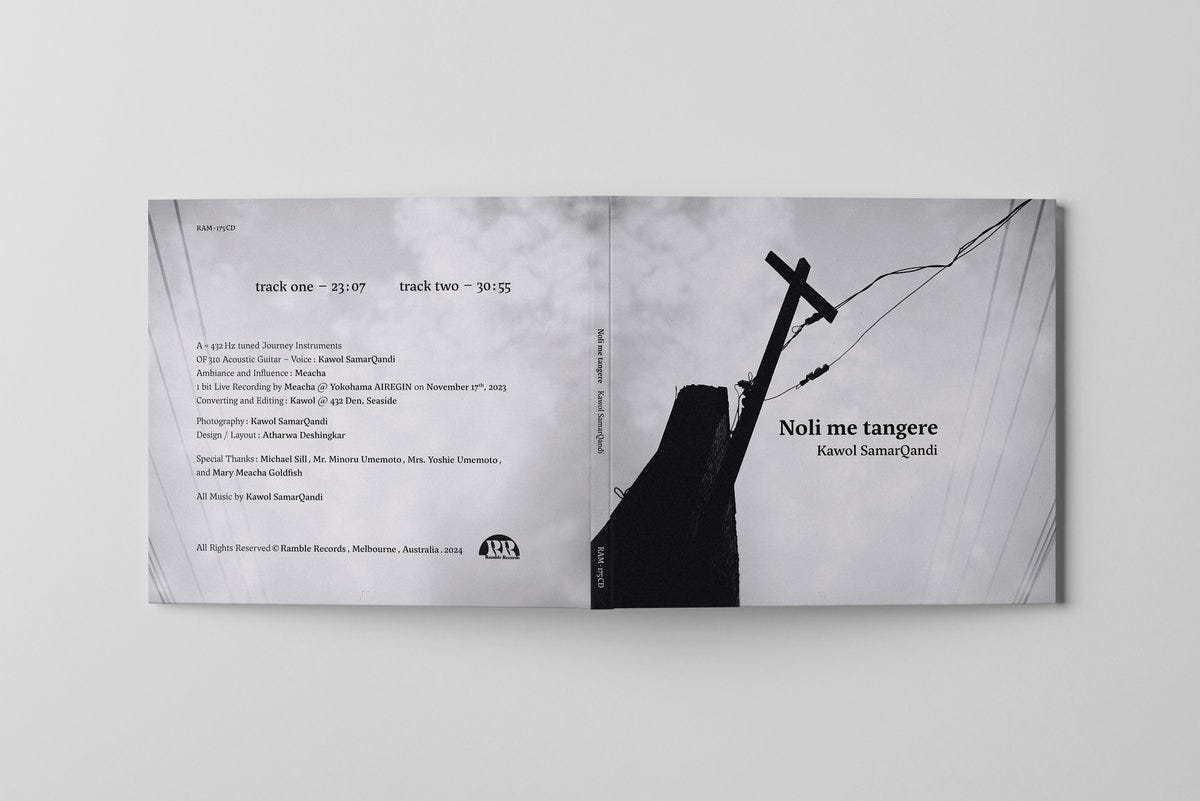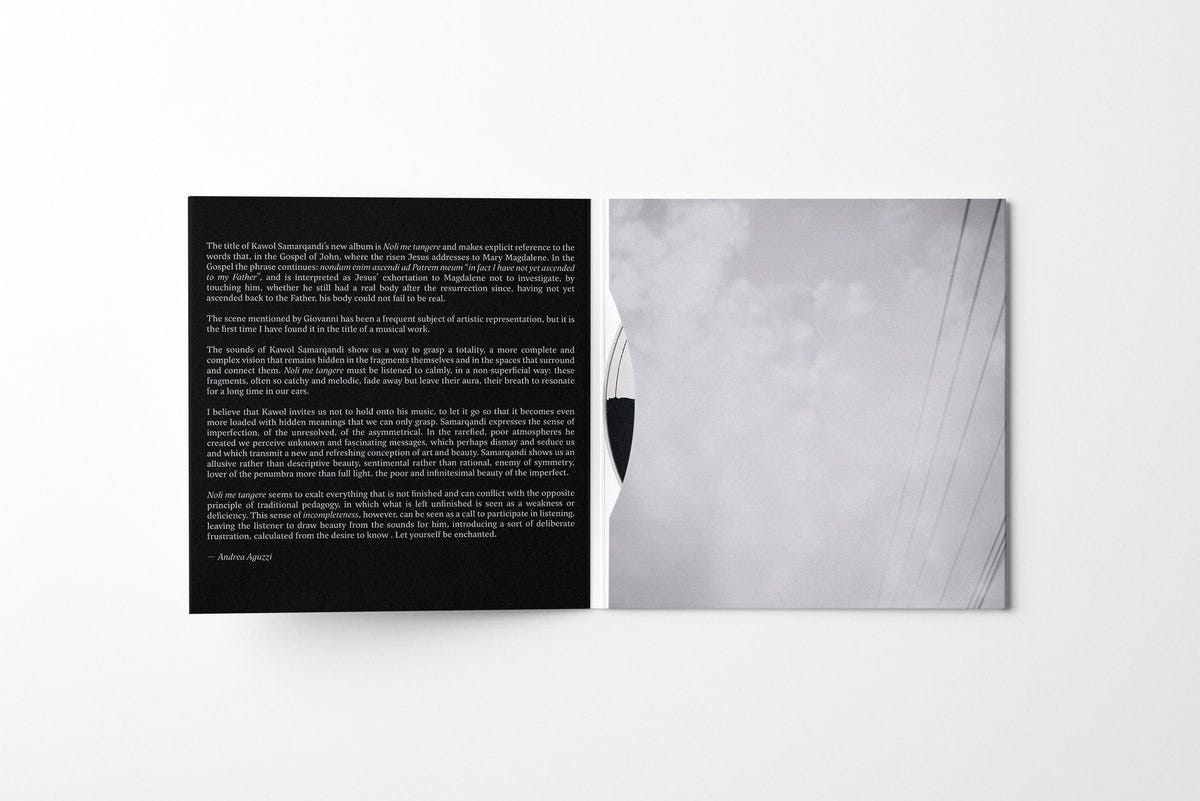Unfortunately I know very little about Kawol Samarqandi's biography. Even his website ( kawol samarqandi – "poor" music that echoes in a small corner of the world. (wordpress.com) ) is of little help:
“he was born in the port town on October 7.
the first music he heard as a child was the noise of shortwave radio.
he began writing poetry at the age of 6.
he began to play the guitar at the age of 12.
he began composing at the age of 14.
he joined the fringe of the Tokyo new wave music scene at the age of 17.
he wandered about North Africa and the Mediterranean region at the time of his twenties, and studied Arabic traditional music under Mr. Ali Sriti.
after returning to Japan, he did a lot of commercial work as a guitarist, arranger, composer, lyric writer and vocalist in studios, on the airwaves, and on tour.
in 1997, he launched his private label PLAKA for EARDRUM.
in the new century, he began his lifework of creating “poor” music by improvising with only his faltering guitar and trembling voice.
in 2007, he formed refugees with Mary Meacha Goldfish.
in August 2021, Ramble Records released “silence, notes and structures 1”.
This is the first piece in a series of works that would mark a milestone in his music.”
It doesn't even indicate the year of birth. Understatement at the highest level. This actually shouldn't be surprising, given that we can find the same attitude in the way Samarqandi interprets his own music. If the pinnacle of elegance is that which is felt, but which is never noticed, if the pinnacle of culture is that which can be recognized in a person, but which is never ostentatious, then the pinnacle of music is that which it is where, however profound its contents, the sound flows away without apparent effort, as if the flow of emotions were not held back by the effort of thought and the muscular tension that the act of playing requires.
I write this because Samarqandi's music is a sum of delicate fragments of incredible beauty and introspection.
The title of his new album (Samarqandi produces with prodigious speed) is “Noli me tangere” (Ramble Records 2024) and makes explicit reference to the words that, in the Gospel of John (20, 17), the risen Jesus addresses to Mary Magdalene. In the Gospel the phrase continues: nondum enim ascendi ad Patrem meum "in fact I have not yet ascended to my Father", and is interpreted as Jesus' exhortation to Magdalene not to investigate, by touching him, whether he still had a real body after the resurrection since, having not yet ascended back to the Father, his body could not fail to be real. The scene mentioned by Giovanni has been a frequent subject of artistic representation, but it is the first time I have found it in the title of a musical work.
The sounds that Kawol Samarqandi plays show us a way to grasp a totality, a more complete and complex vision that remains hidden in the fragments themselves and in the spaces that surround and connect them. In this case it becomes necessary to talk about style using metaphors, using the fragments as metaphors themselves. I allow myself a slight skepticism here: metaphors are essential to thought, but we should use them without believing too much, if the metaphor used had been another, the conclusion would have been different. If I had talked about miniatures instead of fragments this post would have had a different nature. There always remains the pleasure of listening, of the flashes of intuition created by these individual frames that invite the creation of a personal narrative. “Noli me tangere” must be listened to calmly, in a non-superficial way: these fragments, often so catchy and melodic, fade away but leave their aura, their breath to resonate for a long time in our ears.
I believe that Kawol invites us not to hold onto his music, to let it go so that it becomes even more loaded with hidden meanings that we can only grasp. Samarqandi expresses the sense of imperfection, of the unresolved, of the asymmetrical. In the rarefied, poor atmospheres he created we perceive unknown and fascinating messages, which perhaps dismay and seduce us and which transmit a new and refreshing conception of art and beauty. Samarqandi shows us an allusive rather than descriptive beauty, sentimental rather than rational, enemy of symmetry, lover of the penumbra more than full light, the poor and infinitesimal beauty of the imperfect.
His music reminds me of the Japanese concept of shibumi, which refers to the highest type of beauty, combining the contrasting characteristics of "roughness" and "refinement" together. In “Noli me tangere” I find seven qualities: simplicity (i.e. something austere, unadorned and unadorned), the implicit (refers to the intrinsic meaning or something profound that one must have if one wants to avoid being shallow or superficial), modesty (his music does not assert its presence nor underline the personality of its artist or craftsman, it tends to exalt what surrounds him rather than himself), tranquility (or serenity, composure, sobriety , calm and silence), naturalness (I don't hear anything artificial, technological, futuristic in his music), roughness (his music is irregular when listening) and normality (it's nothing too complex, glossy, wanted). “Noli me tangere” seems to exalt everything that is not finished, it can conflict with the opposite principle of traditional pedagogy in which what is left unfinished is seen as a weakness or deficiency. This sense of "incompleteness", however, can be seen as a call to participate in listening, leaving the listener to draw beauty from the sounds for him, introducing a sort of deliberate frustration, calculated from the desire to know . Let yourself be enchanted.
For those wishing to delve further into Samarqandi-san's music, I recommend carefully reading his "Notes about Poor Music": Notes about Poor Music. 1. What is “sound” to human beings? And… | by Kawol Samarqandi | Medium








